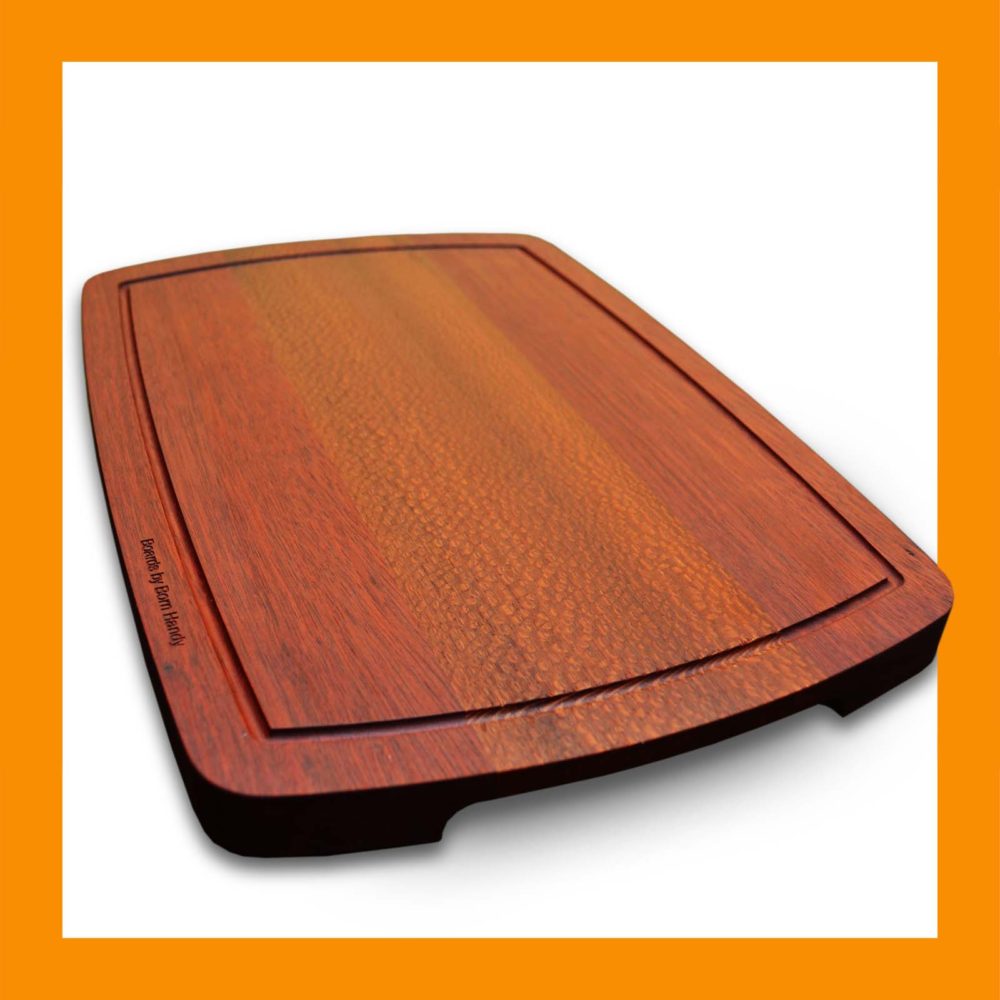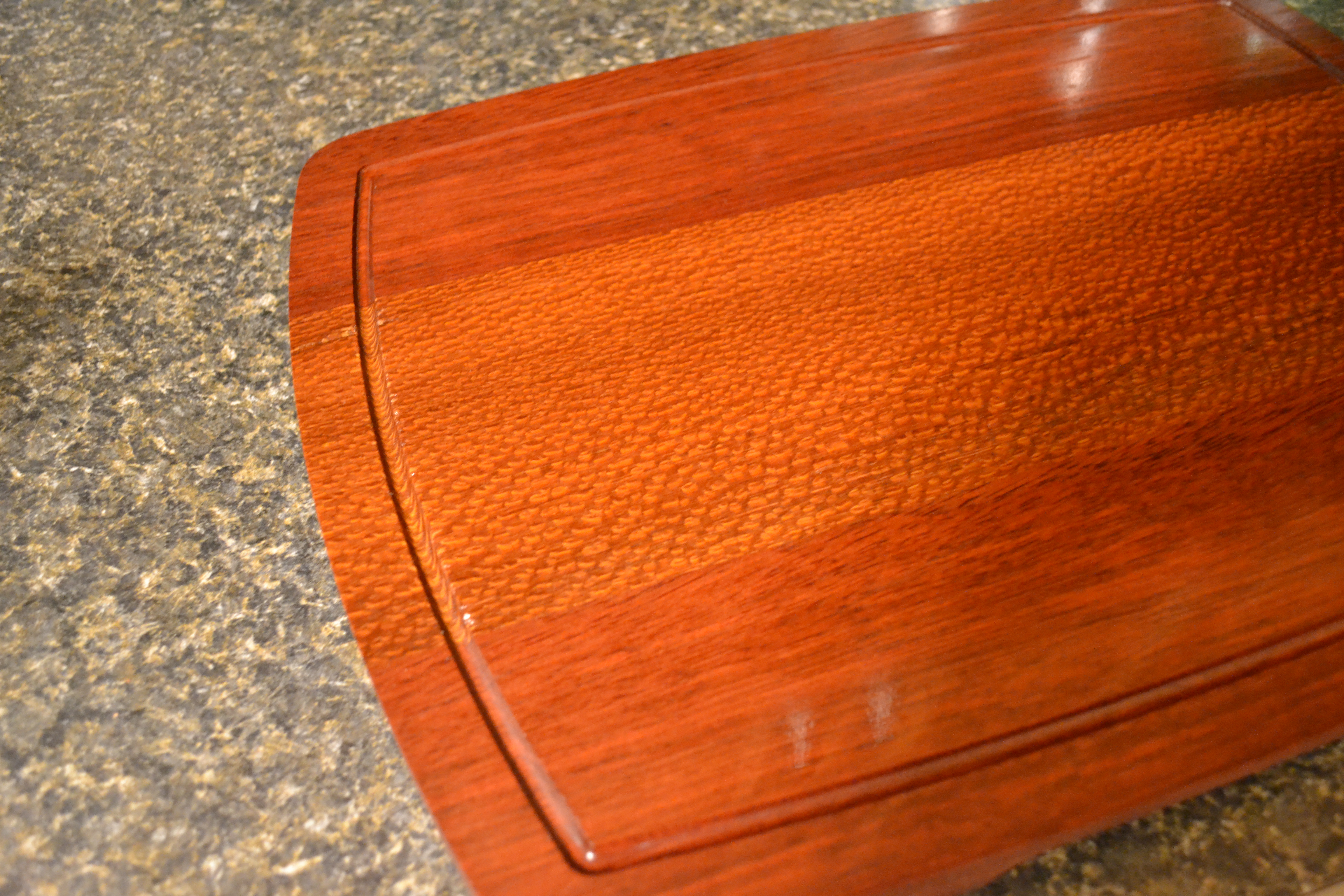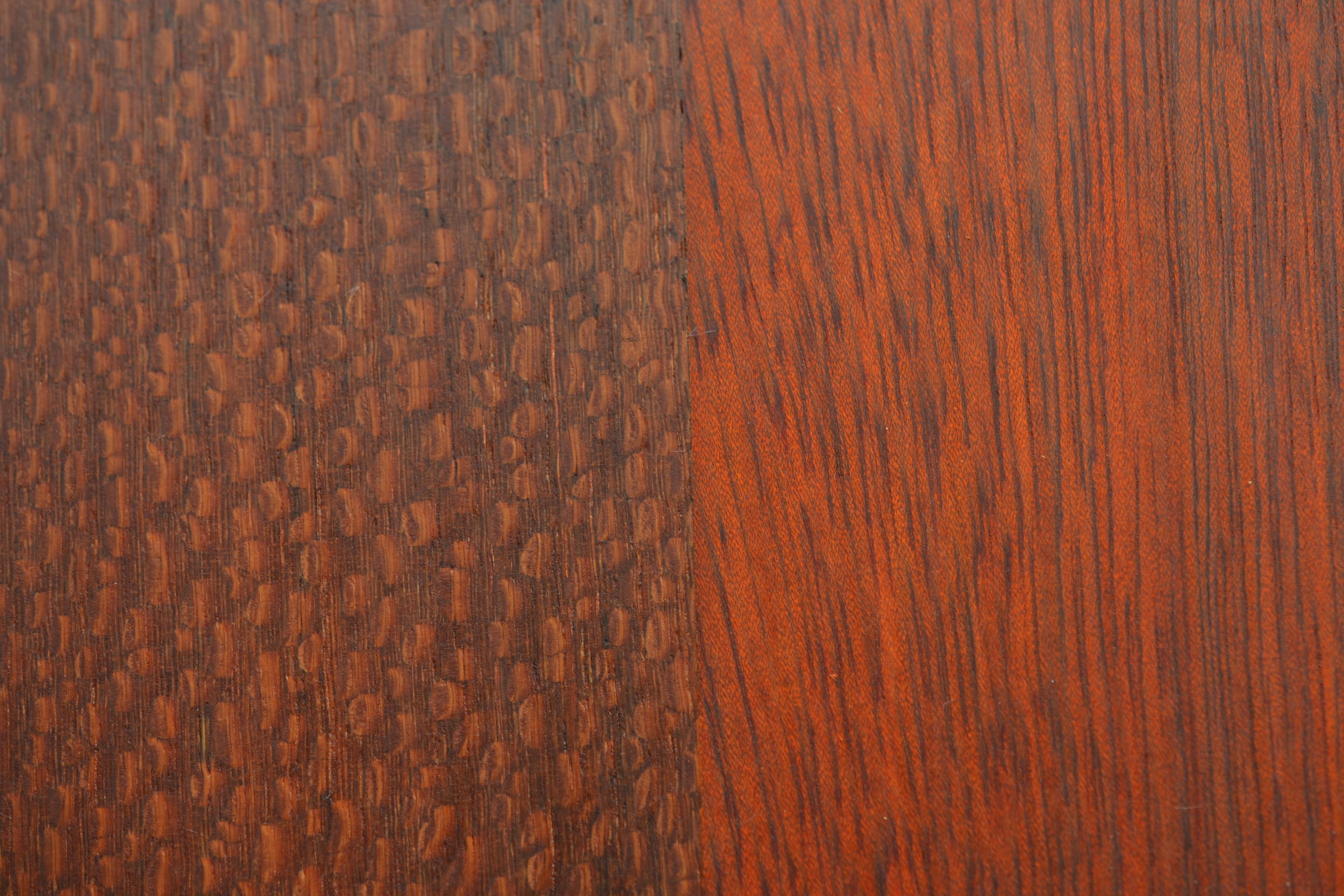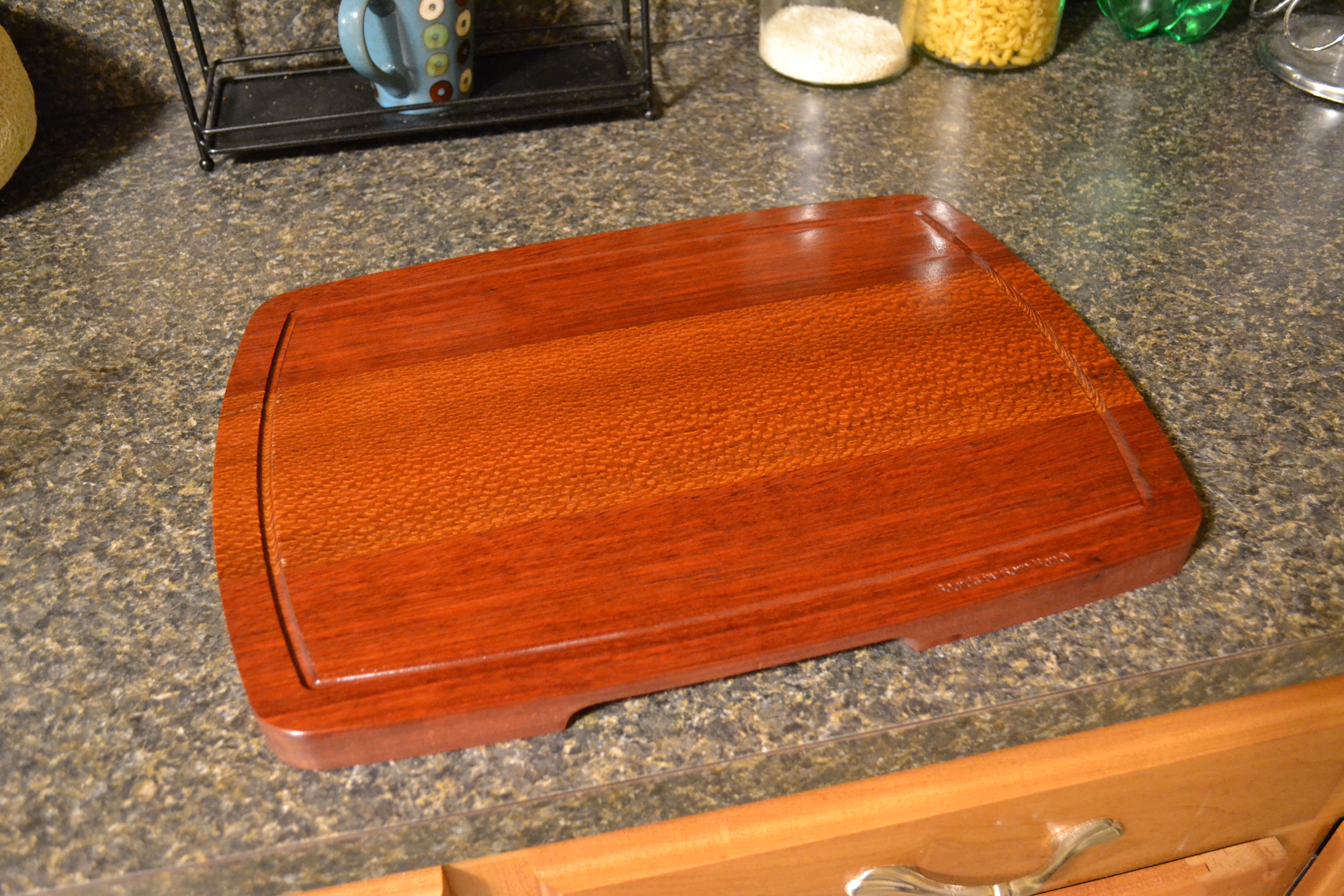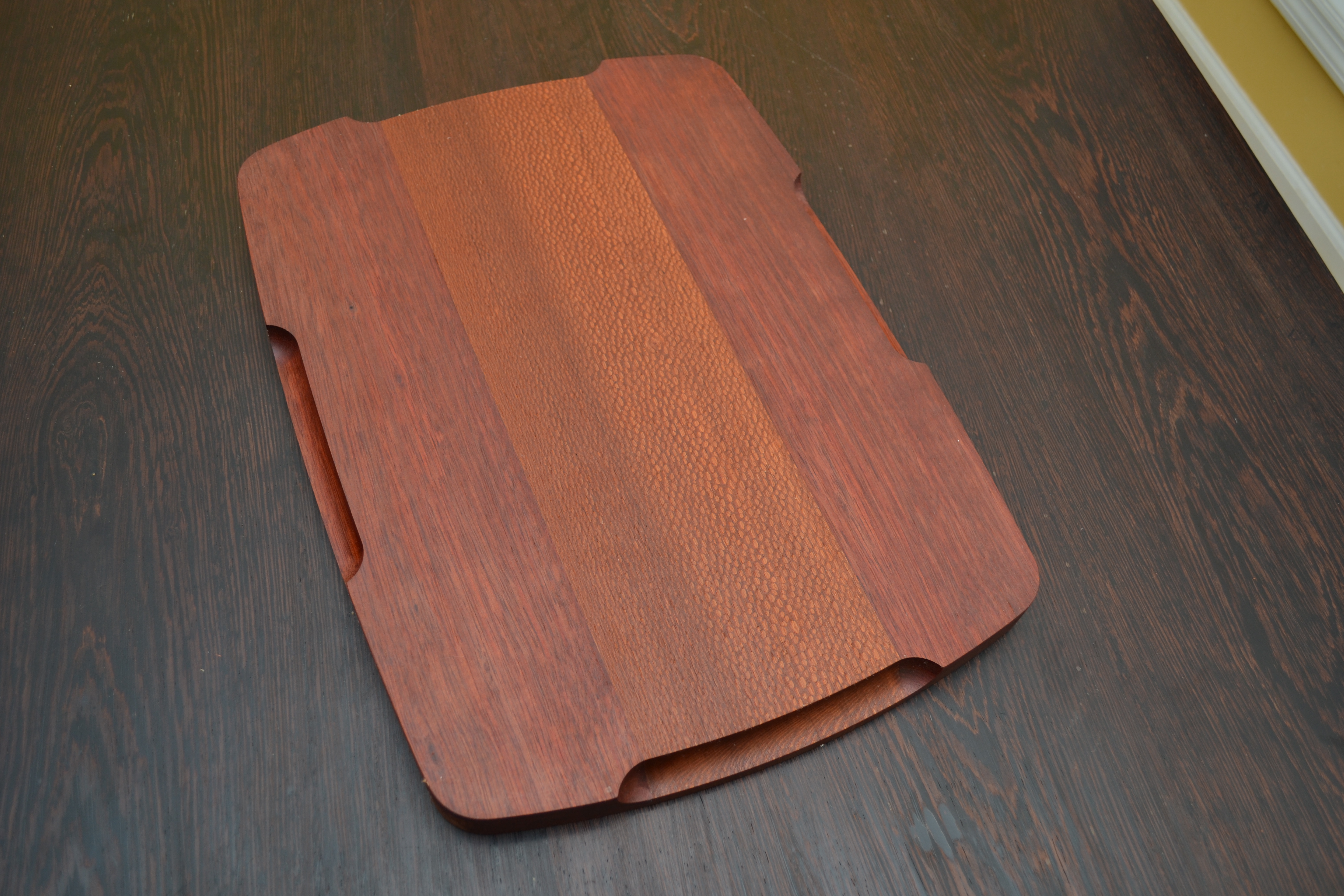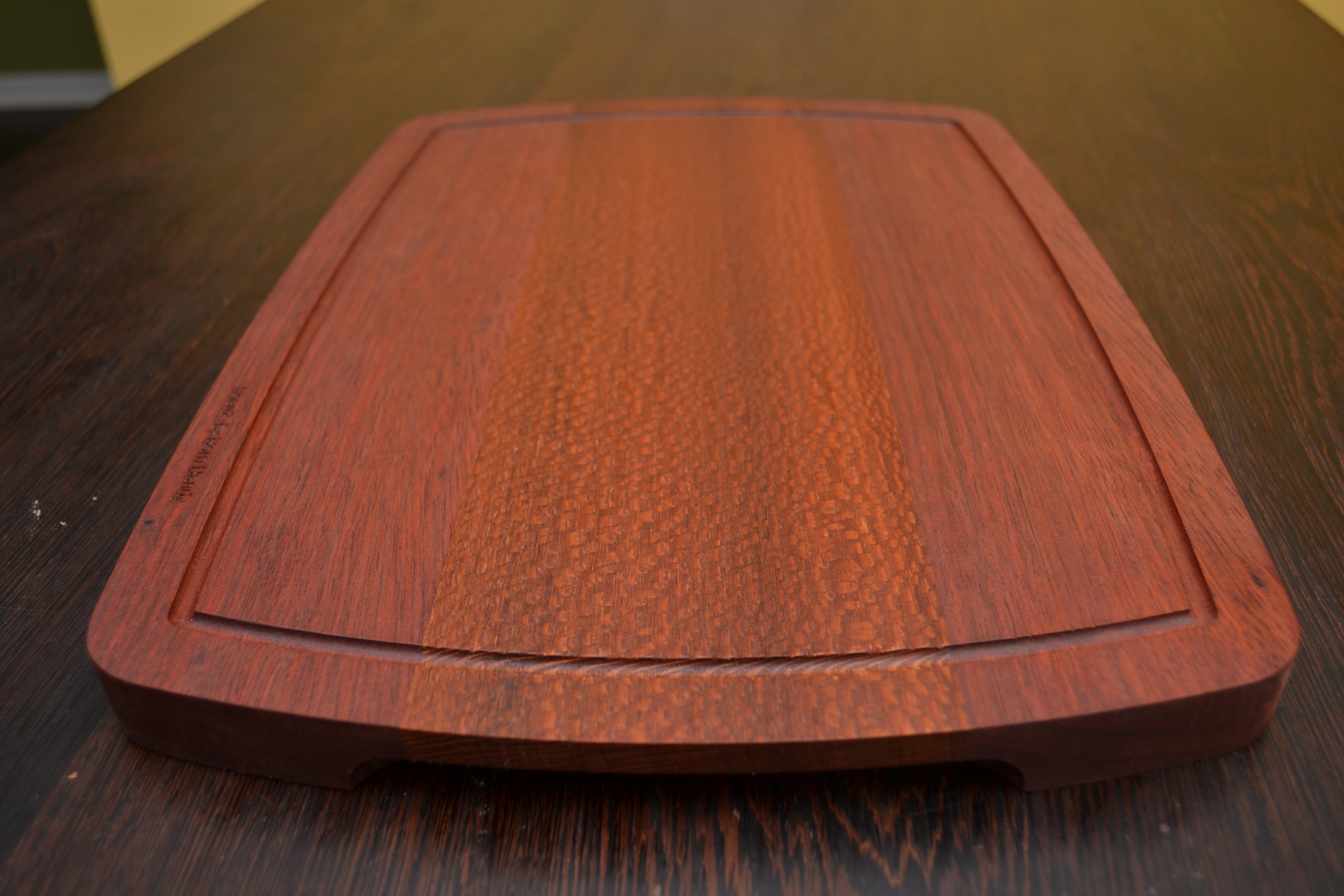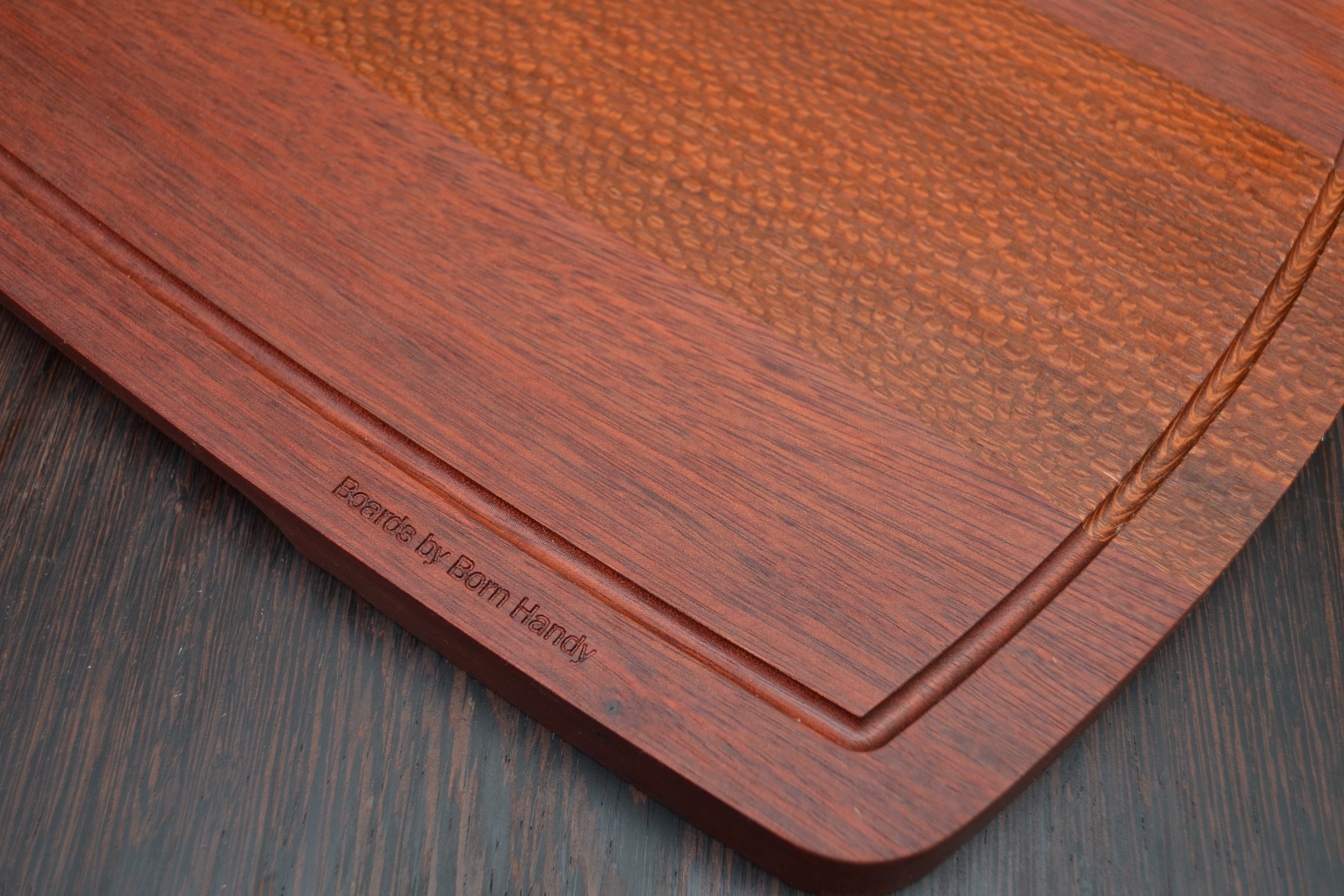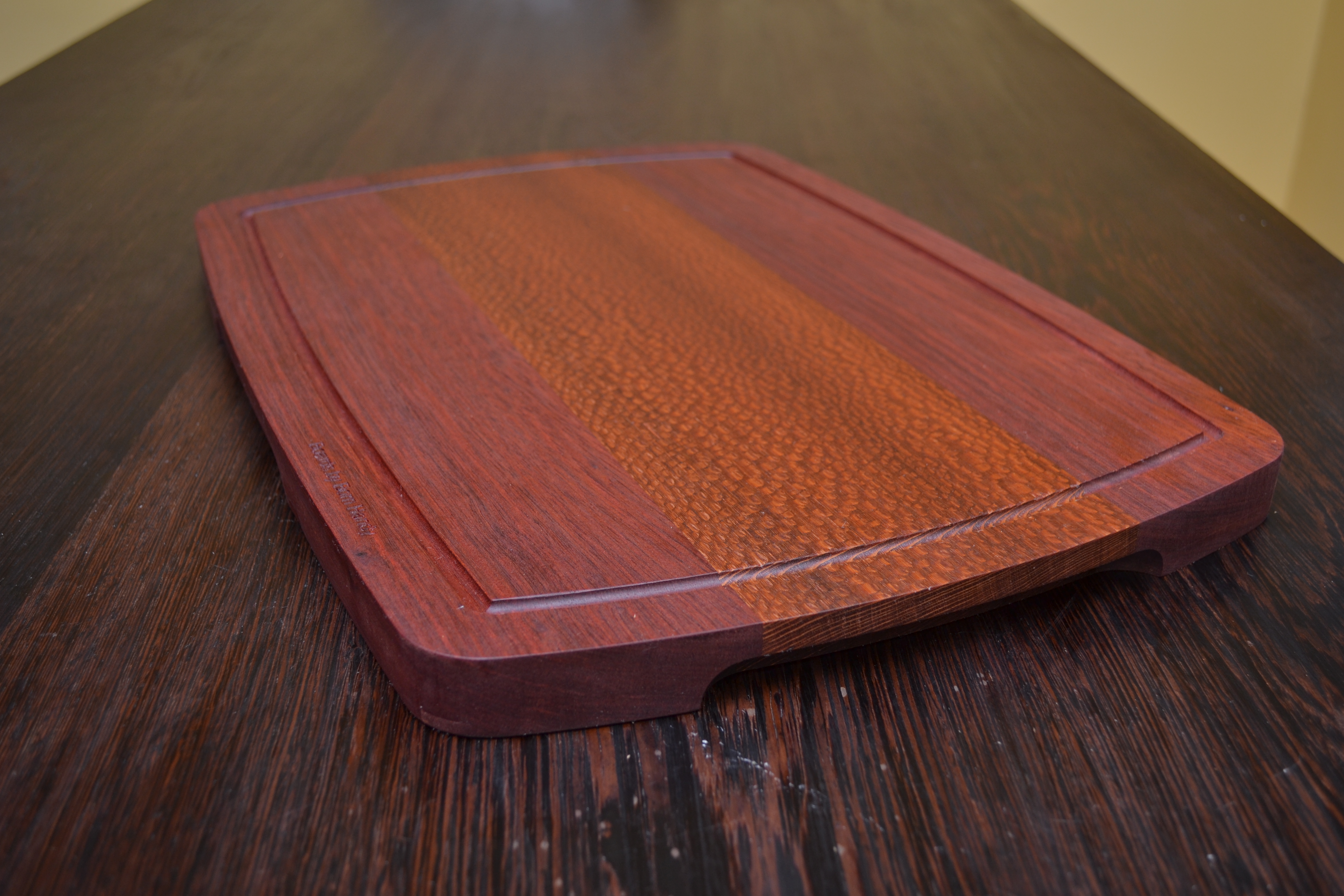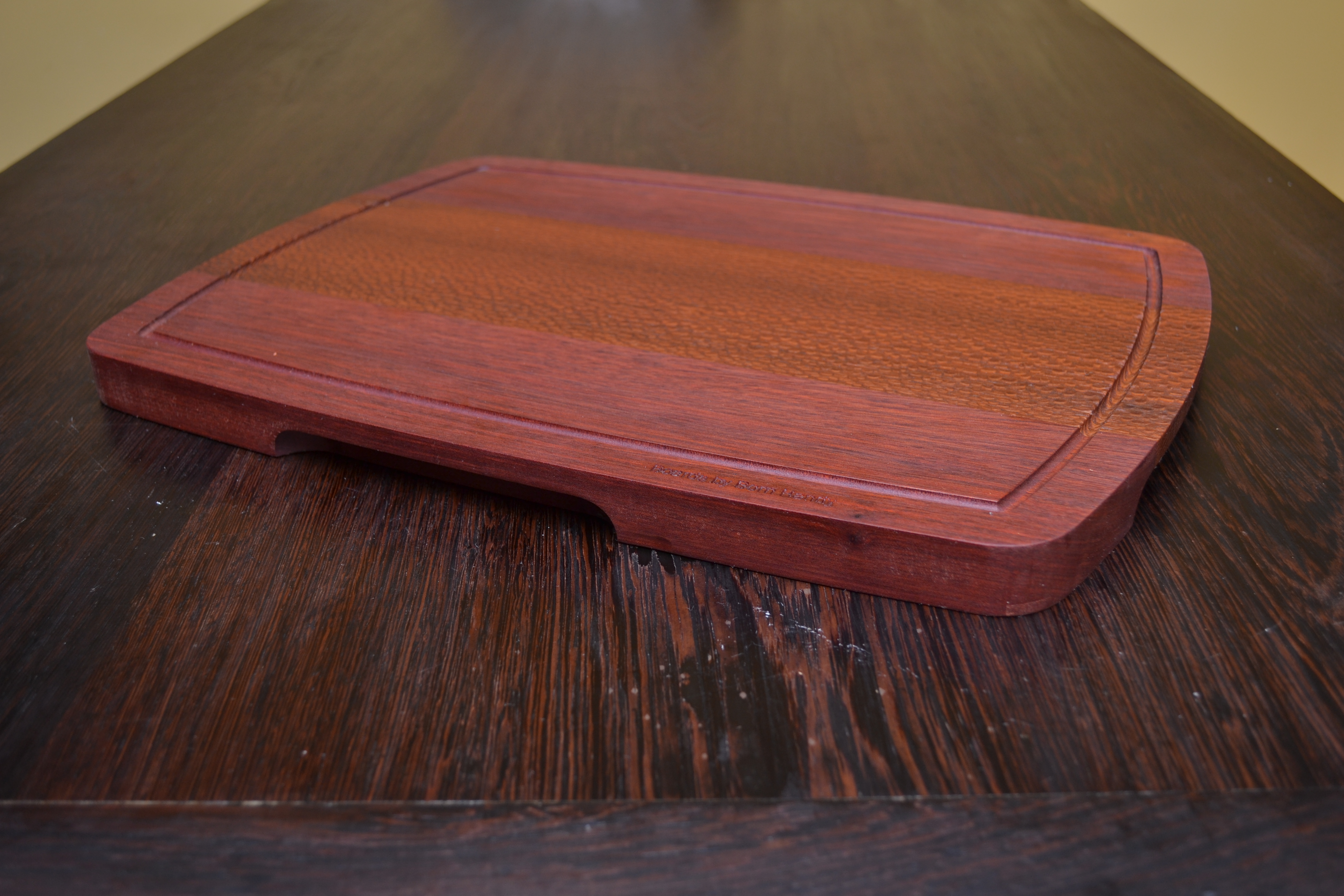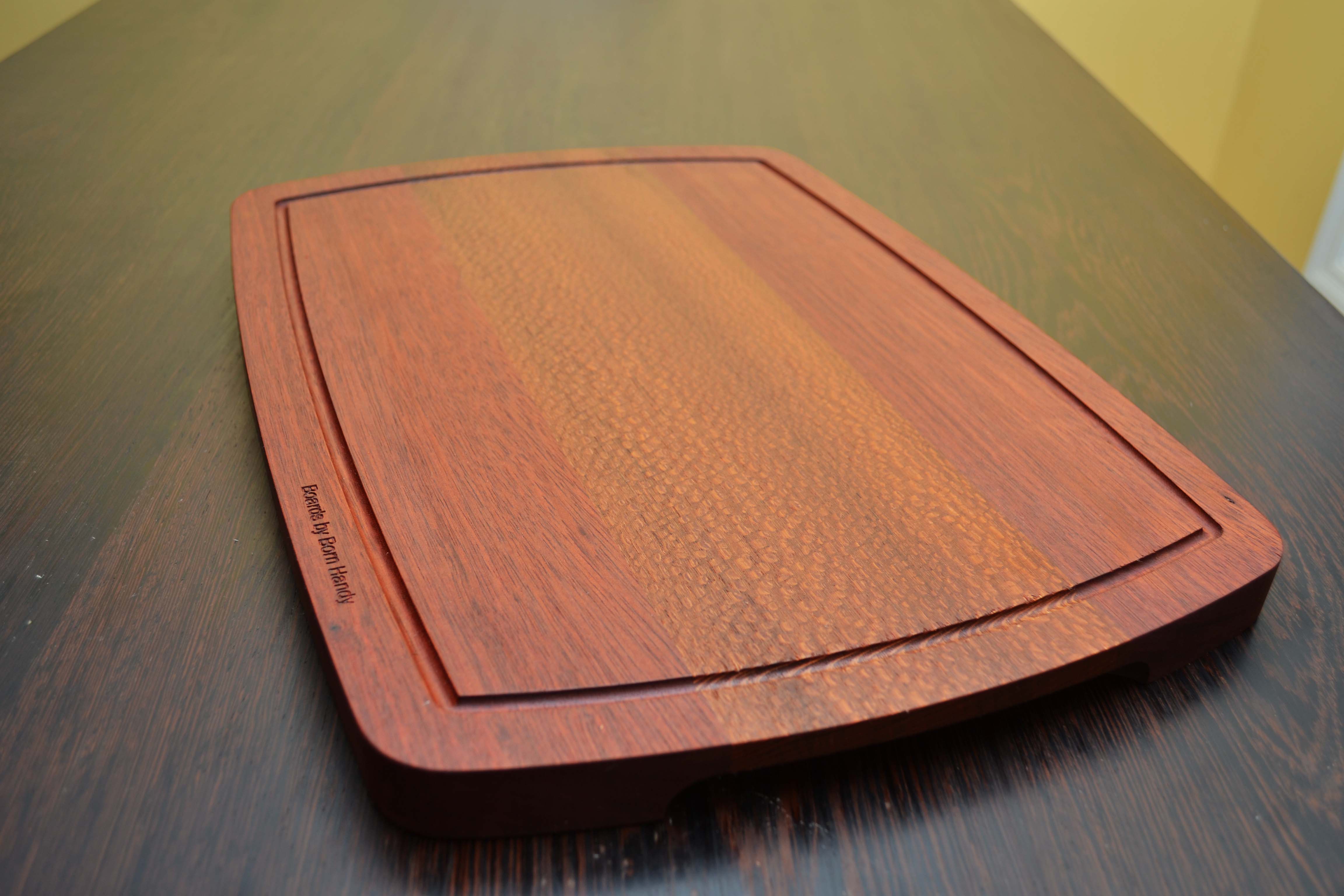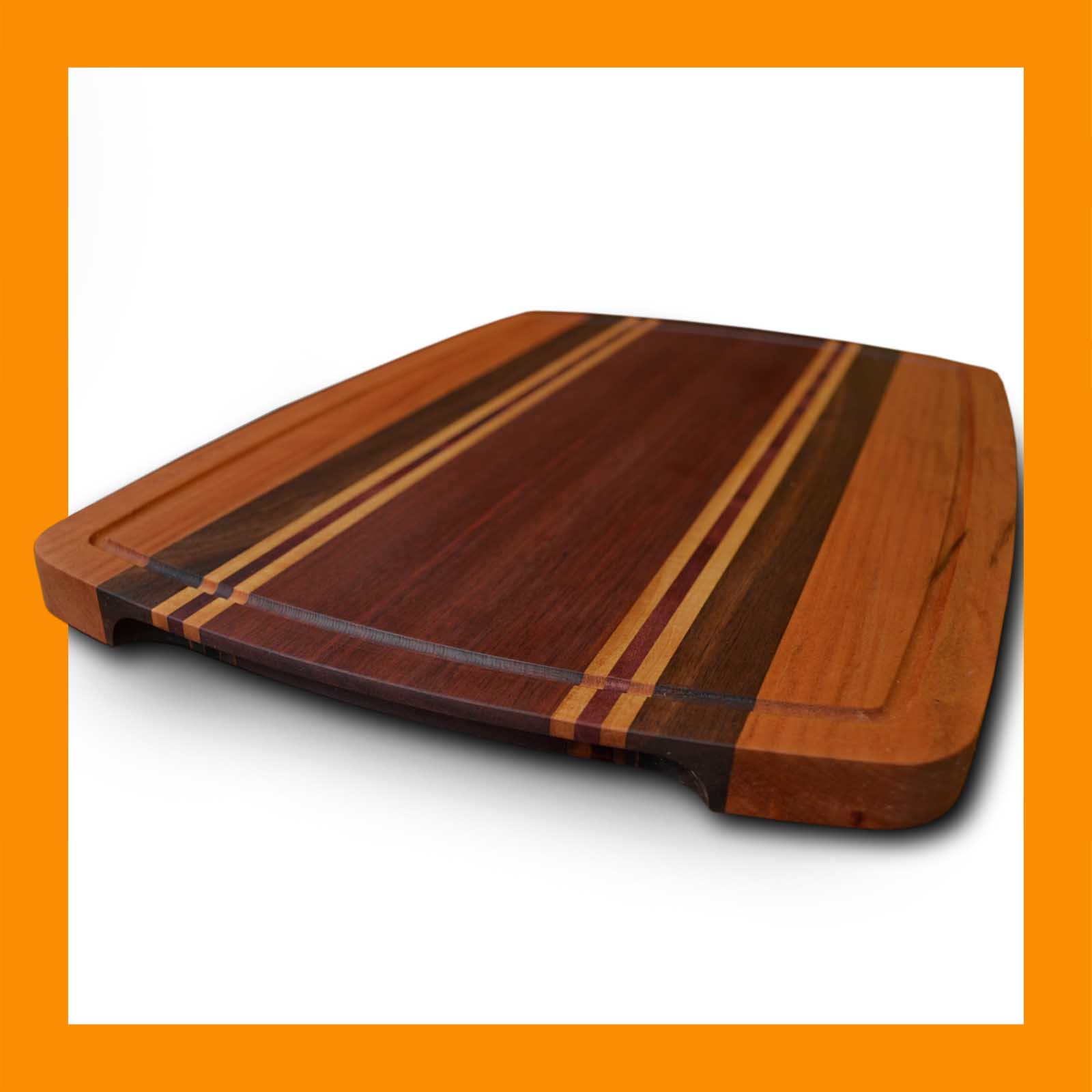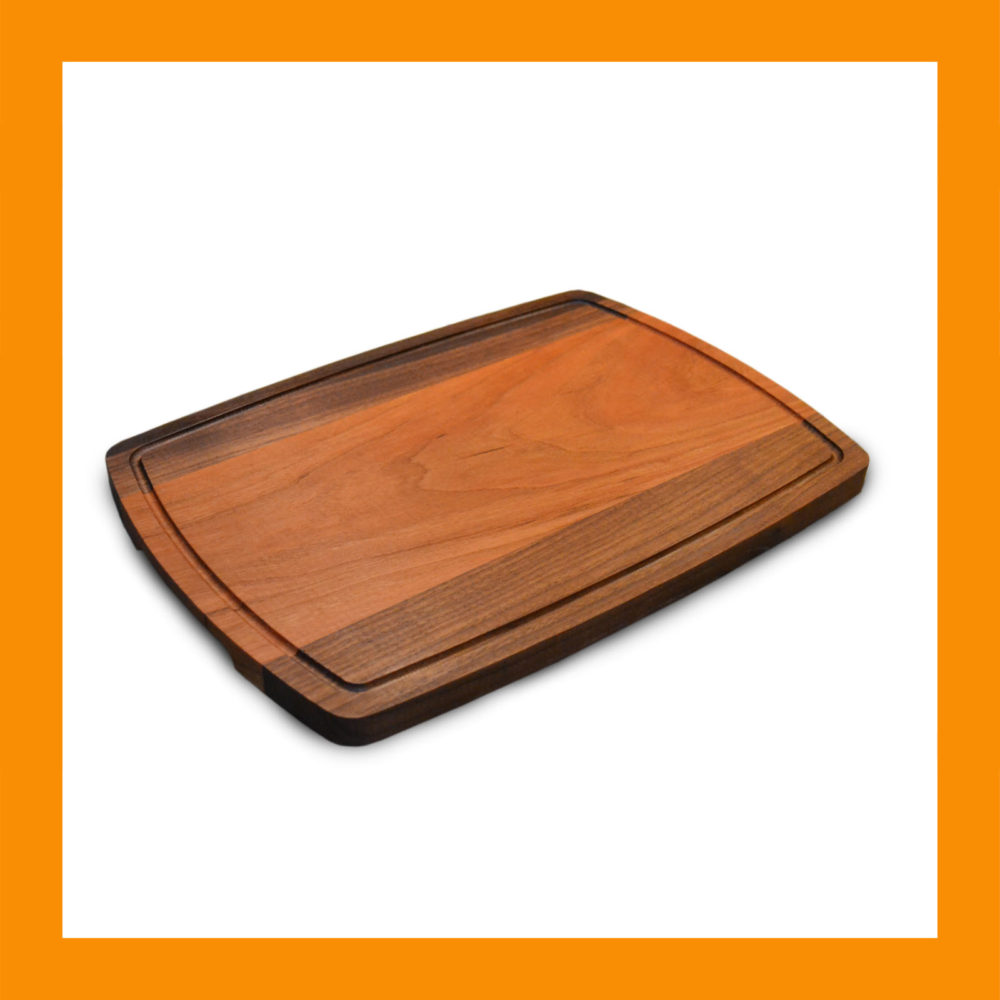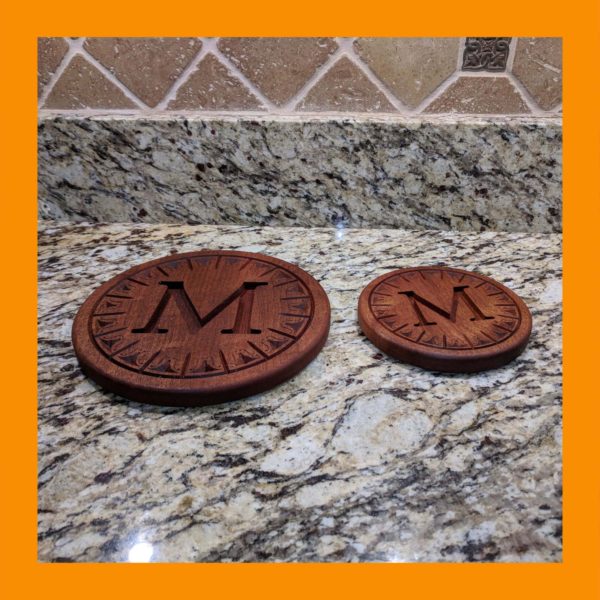Cutting Board # 3, 16 5/8 inches x 12 inches
$85.00 Original price was: $85.00.$70.00Current price is: $70.00.
1 in stock
Description
All Cutting boards from Born Handy are made as a “what you see is what you get”, so if you order one, you are ordering the one in the picture. Each one is unique, and may or may not ever be reproduced – simply because the availability of materials is variable, and I usually only make cutting boards a few times a year, and in small batches.
This cutting board has a leopardwood center with bloodwood sides. It is one inch thick, and the first thing you will notice with this board is how heavy it is – over 6 lbs. Bloodwood and leopardwood are very heavy, very hard, and very expensive!
To help with lifting, there are 4 handles routed into the edges. It also has a groove to catch any run-off, and is made to look as good as it works.
It is almost 17 inches long, just over 12 inches wide, and almost 1 inch thick. It is made with FDA approved wood glue that is both extremely strong, and waterproof, so this board can last a lifetime with proper care. …and speaking of proper care, see the “things you need to know” tab for care instructions and other information.
Things you need to know
This board is on sale because it has a blemish in the leopardwood. It’s a tiny void in the wood that was exposed while cutting, and was so unnoticeable, I opted to leave it in rather than make the board thinner to remove it. It is visible on the first gallery photo on the upper left area of the leopardwood, and doesn’t quite pass through the runoff groove. If I hadn’t pointed it out, you may have missed it!
This cutting board is a wood product, and needs to be oiled or waxed (food grade mineral oil or food grade bees wax) periodically. There is some debate about how often to do this, but I recommend at least every three months. It really depends on how much use it sees, so you may need to adjust accordingly.
Also, this cutting board is NOT dishwasher safe. Wash with hot soapy water and dry immediately. You should never store a wood cutting board without thoroughly drying all surfaces.
Cutting meat or vegetables is fine with this board, although my recommendation is to have a dedicated board for each purpose. There is plenty of research that suggests that you can cut both with one board, so long as it has been cleaned and dried between uses. The problem is, we often need to cut meat and vegetables while preparing one meal, and sufficient drying time isn’t an option, so I think the easiest solution is a different cutting board for each.
Although wood cutting boards can be periodically sanded to remove scratches and gouges, cutting with the grain greatly reduces the need to resurface a board. This is more of a thing you should try and make a habit of, but in reality, it just isn’t that big of a deal to sand the top now and then, so cut however is most convenient for you.
Lastly, these come with one treatment of mineral oil already applied, so it should be ready to use right after a good cleaning, but may need a second application because the first coat can soak in pretty deep, and the wood may need a little more protection than just the one coat.

